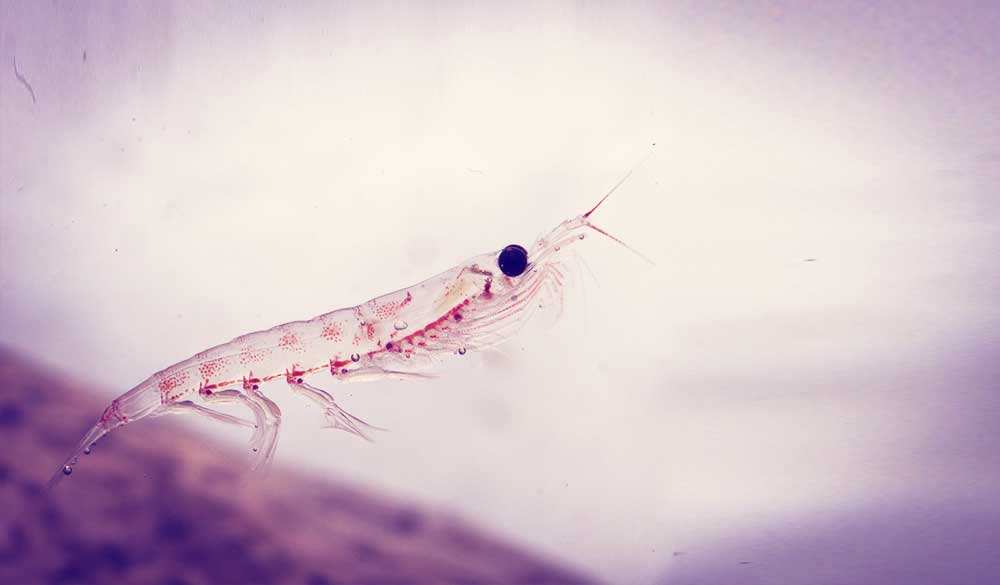It has been suggested that supplements containing krill oil may be more effective at increasing the levels of the omega-3 fatty acids EPA and DHA in red blood cells – the Omega-3 Index – than fish oil.
The Omega-3 Index is a diagnostic tool that is rapidly gaining popularity with healthcare practitioners and consumers alike, as it provides a simple clinical tool to assess a person’s cardiovascular health. In contrast to plasma fatty acid levels, which reveal short-term fatty acid intake, the Omega-3 Index reflects long-term intake and is believed to mirror overall tissue EPA and DHA levels, including cardiac tissue. An Omega-3 Index of 8% or above is considered optimal, while a low level indicates a higher risk of sudden cardiac death (Figure 1).

Figure 1. Target zones for the Omega-3 Index[1]
A recently published global study mapping the Omega-3 Index status of the world’s population demonstrated that many countries, including Australia, have low levels (4-6%), putting the populations at increased risk of cardiovascular related mortality.[2]
EPA and DHA are considered essential fatty acids, meaning they are not produced in the body but must be obtained from a dietary source, such as oily fish or supplementation with fish or krill oil. While both fish and krill oils are excellent sources of EPA and DHA, the molecular structures of the fatty acids in these products sets them apart. In fish, the omega-3s are mainly stored as triglycerides, whereas in krill, 30-65% of the fatty acids are incorporated into phospholipids, primarily phosphatidylcholine.[3]
Because phospholipids comprise the structure of cell membranes, long-chain omega-3 fatty acids in the form of phospholipids might facilitate the passage of fatty acids through the intestinal wall and increase the bioavailability of these fatty acids in krill oil, compared to when they are consumed in the triglyceride form from fish oil.[3]
A number of studies support the hypotheses of enhanced absorption facilitated by the molecular structure of krill oil:
- Ulven et al. administered different doses of krill oil (3g per day, equiv. 534mg EPA and DHA) and fish oil (1.8g per day, equiv. 864mg EPA and DHA) in a seven week randomised trial. A significant increase in plasma fatty acid levels was noted for both groups; however, there were no significant dissimilarities between the fish and krill oil groups despite the difference in omega-3 dose, leading to the conclusion that krill oil and fish oil represent comparable dietary sources of omega-3 fatty acids, even if the EPA and DHA dose in the krill oil was 62.8% of that in the fish oil.[4]
- Ramprasath et al. also found krill oil to be more effective than fish oil in increasing omega-3 levels and improving the Omega-3 Index following four weeks of supplementation. However, dosages of omega-3 fatty acids were kept identical in this study to enable direct comparison between the two supplements.[5]
- In a yet unpublished study, 2g per day krill oil administered for eight weeks increased the Omega-3 Index about 70% more than the group taking 2g per day fish oil.1 Another unpublished study found that even in patients with heart disease and a high starting Omega-3 Index, krill oil was able to increase the Omega-3 Index even higher than those taking fish oil. The effect was significant after four weeks of treatment.[1]
These results support the hypothesis that EPA and DHA from krill oil may have a better bioavailability compared to those from fish oil.
Interestingly, Kohler and colleagues compared the absorption rates of krill oil, krill meal and fish oil (matched to 1700mg EPA/DHA in each group) in a single-dose, blinded, cross-over trial. Fatty acid composition of plasma triglycerides and phospholipids were measured repeatedly for 72 hours. The EPA and DHA in krill oil was found to have a higher 72-hour bioavailability than in krill meal or fish oil, possibly indicating a faster absorption rate. However, as the bioavailability for the krill meal was the same as for the fish oil, these findings argue against the theory that phospholipids are better absorbed than triglycerides.[6]
Thus, larger and more strictly controlled human trials are needed to fully elucidate the bioavailability and differences in absorption mechanisms for these oils.
References
- Burri L. Optimising the Omega-3 Index with krill oil, 2014. Aker BioMarine: Oslo.
- Stark KD, Van Elswyk ME, Higgins MR, et al. Global survey of the omega-3 fatty acids, docosahexaenoic acid and eicosapentaenoic acid in the blood stream of healthy adults. Prog Lipid Res 2016;63:132-152. [Full text]
- Ulven SM, Holven KB. Comparison of bioavailability of krill oil versus fish oil and health effect. Vasc Health Risk Manag 2015;2015(11):511-524. [Full text]
- Ulven SM, Kirkhus B, Lamglait A, et al. Metabolic effects of krill oil are essentially similar to those of fish oil but at lower dose of EPA and DHA, in healthy volunteers. Lipids 2011;46(1):37-46. [Full text]
- Ramprasath VR, Eyal I, Zchut S, et al. Enhanced increase of omega-3 index in healthy individuals with response to 4-week n-3 fatty acid supplementation from krill oil versus fish oil. Lipids Health Dis 2013;12:178. [Full text]
- Köhler A, Sarkkinen E, Tapola N, et al. Bioavailability of fatty acids from krill oil, krill meal and fish oil in healthy subjects – a randomized, single-dose, cross-over trial. Lipids Health Dis 2015;14:19. [Full text]
DISCLAIMER:
The information provided on FX Medicine is for educational and informational purposes only. The information provided on this site is not, nor is it intended to be, a substitute for professional advice or care. Please seek the advice of a qualified health care professional in the event something you have read here raises questions or concerns regarding your health.



